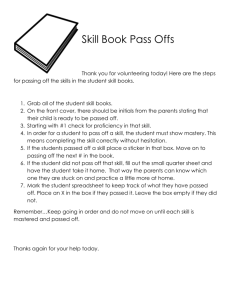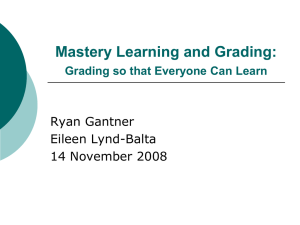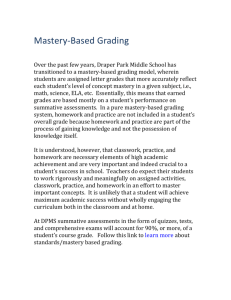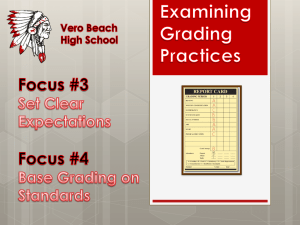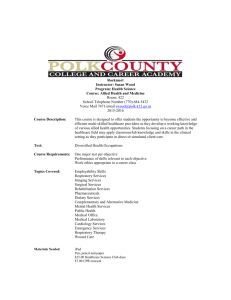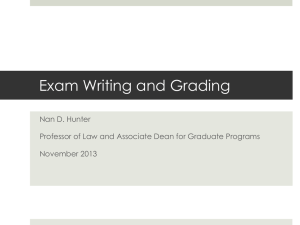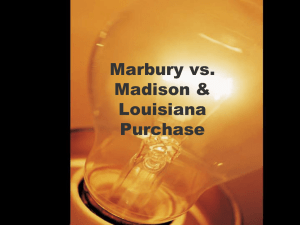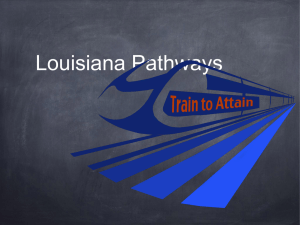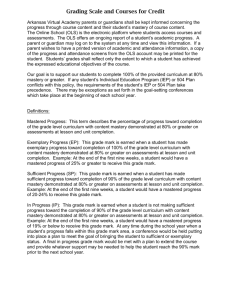Pre-Observation Email to Evaluator
advertisement
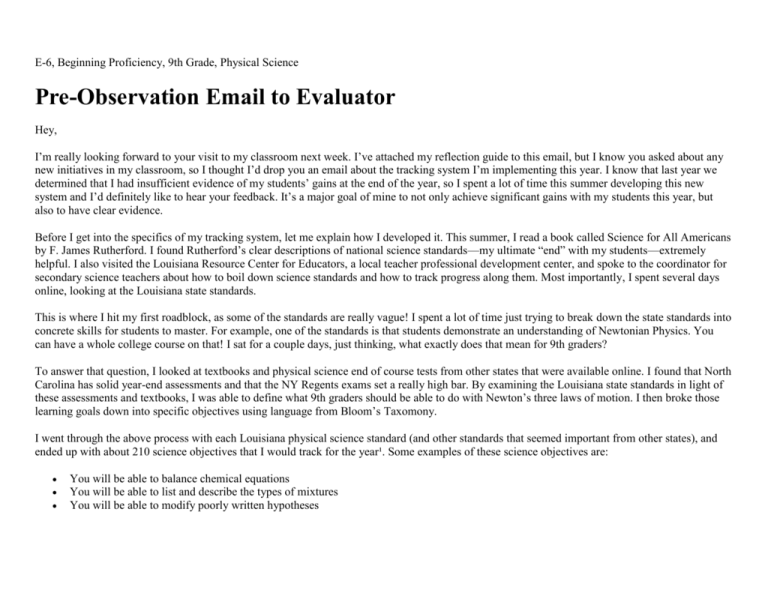
E-6, Beginning Proficiency, 9th Grade, Physical Science Pre-Observation Email to Evaluator Hey, I’m really looking forward to your visit to my classroom next week. I’ve attached my reflection guide to this email, but I know you asked about any new initiatives in my classroom, so I thought I’d drop you an email about the tracking system I’m implementing this year. I know that last year we determined that I had insufficient evidence of my students’ gains at the end of the year, so I spent a lot of time this summer developing this new system and I’d definitely like to hear your feedback. It’s a major goal of mine to not only achieve significant gains with my students this year, but also to have clear evidence. Before I get into the specifics of my tracking system, let me explain how I developed it. This summer, I read a book called Science for All Americans by F. James Rutherford. I found Rutherford’s clear descriptions of national science standards—my ultimate “end” with my students—extremely helpful. I also visited the Louisiana Resource Center for Educators, a local teacher professional development center, and spoke to the coordinator for secondary science teachers about how to boil down science standards and how to track progress along them. Most importantly, I spent several days online, looking at the Louisiana state standards. This is where I hit my first roadblock, as some of the standards are really vague! I spent a lot of time just trying to break down the state standards into concrete skills for students to master. For example, one of the standards is that students demonstrate an understanding of Newtonian Physics. You can have a whole college course on that! I sat for a couple days, just thinking, what exactly does that mean for 9th graders? To answer that question, I looked at textbooks and physical science end of course tests from other states that were available online. I found that North Carolina has solid year-end assessments and that the NY Regents exams set a really high bar. By examining the Louisiana state standards in light of these assessments and textbooks, I was able to define what 9th graders should be able to do with Newton’s three laws of motion. I then broke those learning goals down into specific objectives using language from Bloom’s Taxomony. I went through the above process with each Louisiana physical science standard (and other standards that seemed important from other states), and ended up with about 210 science objectives that I would track for the year¹. Some examples of these science objectives are: You will be able to balance chemical equations You will be able to list and describe the types of mixtures You will be able to modify poorly written hypotheses I looked at these objectives, grouped them, sequenced them, plotted them out for the year in terms of unit plans, and created a long-term plan. This process helped me to see which objectives could be combined in one lesson and which objectives would be ongoing over several lessons. I also determined which objectives were assessable with a written test and which ones I would have to assess in alternate ways. Some objectives that could not be tested on a traditional assessment are: You will be able to conduct an experiment that evaluates Newton’s laws of motion You will be able to compare the motion of molecules in the different phases of matter You will be able to demonstrate wave action using wave springs Once I had this list, I created a master spreadsheet with all of my objectives for the year broken down by class that I unveiled on the first day of school. I explained to my students that this was the list of all of the objectives we would need to master this year. Our big goal for the class is that all students will master 80% of these objectives. In addition, I have a spreadsheet for each assessment broken down by student. On these “by student” spreadsheets, I have the objectives that were tested on the assessment in the left hand column, and going across the top row I have a column for each of my students. For each objective, students get either a “1” or a “0”. A “1” means that they have demonstrated mastery of that objective. A “0” means that they have yet to demonstrate mastery. The last column is for the percentages of my students who have mastered the objective. I’ve managed to implement this system for the first few months of school and things seem to be going well. At the beginning of each unit, I administer a diagnostic to determine my students’ proficiency levels on the unit’s objectives. During the unit, my students take quizzes every week that don’t go into my tracking or grading system, but do allow me to see what objectives they’re mastering. At the end of each unit, my students take an assessment that I’ve aligned directly with my objectives—with objectives being tested by one or more questions on each test. I try to make clear to my students my expectations for what work they need to show on the test and how I will be grading the exam and assigning point values to each component on the assessment. Once I collect the assessment, I’m pretty good about grading the exams and returning them in a week. When I enter the exams into my tracking sheet, I average the results of the questions that align to each objective. When students achieve an 80% or higher on this average, I give them a 1 on my tracking sheet because they have achieved mastery. Students receive back from me tests with a letter grade assigned to them. However, I know from my Excel tracking sheet which objectives they have mastered individually. I also tell students the percent of the class that has mastered each objective on our class tracking sheet so they know our progress as a class toward the big goal. In this way, every month I have a clear picture of each of my students’ progress and students have a good idea of how we are doing as a class in achieving our big goal. Then we are ready to move onto our next unit and a whole new set of material! I’m really excited about this new system and I’m confident that this year I will have clear significant gains data. I look forward to your visit and any feedback you might have. Thanks! ¹ I have additional objectives that are math or literacy based, and while I incorporate those into lessons, I don’t include them in my tracking system. As a science teacher I feel icky penalizing students for bad grammar or not knowing how to manipulate equations. I assess my student's abilities in these areas and teach the skills (or support their other core area teachers’ teaching of these skills) as required, but I do not monitor them as closely as the science objectives.
